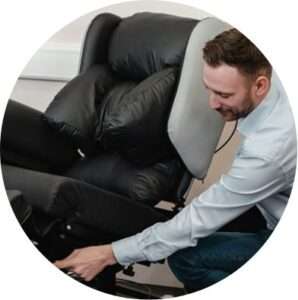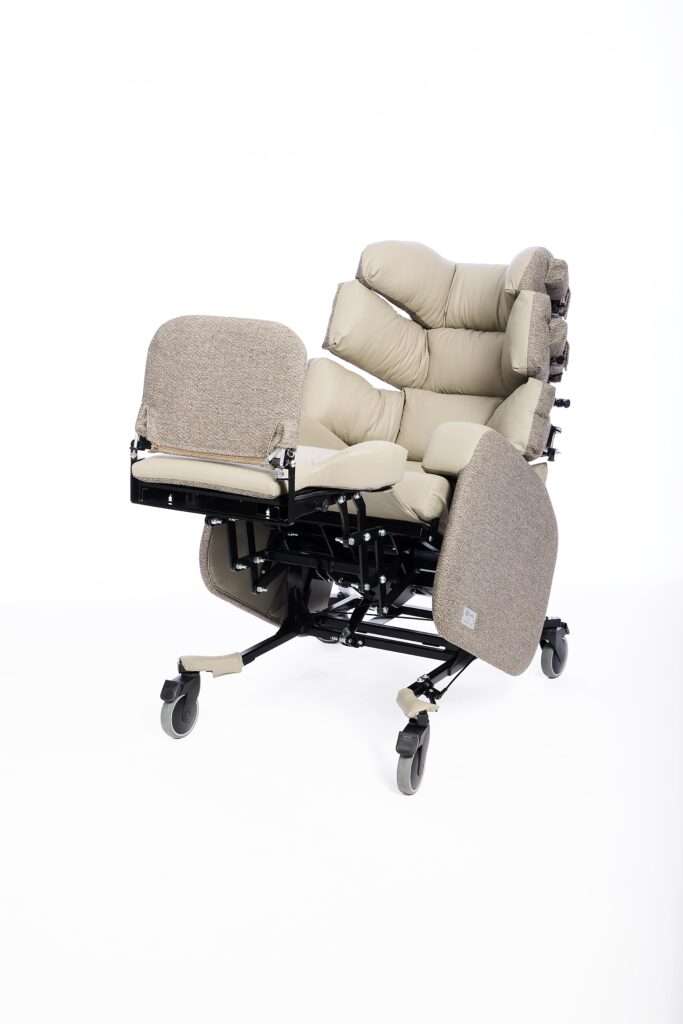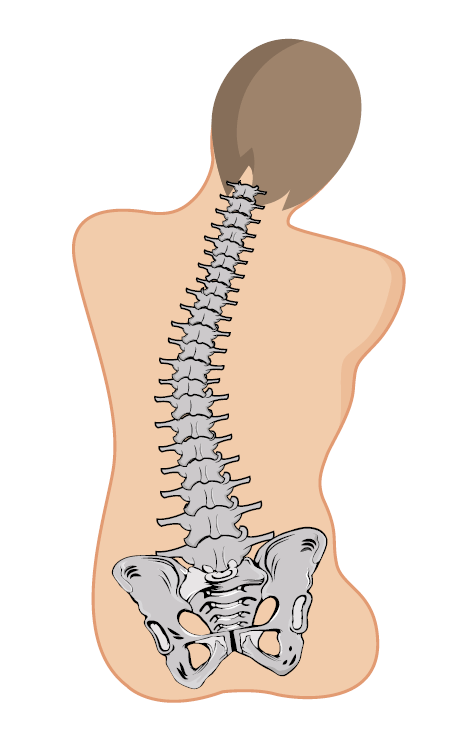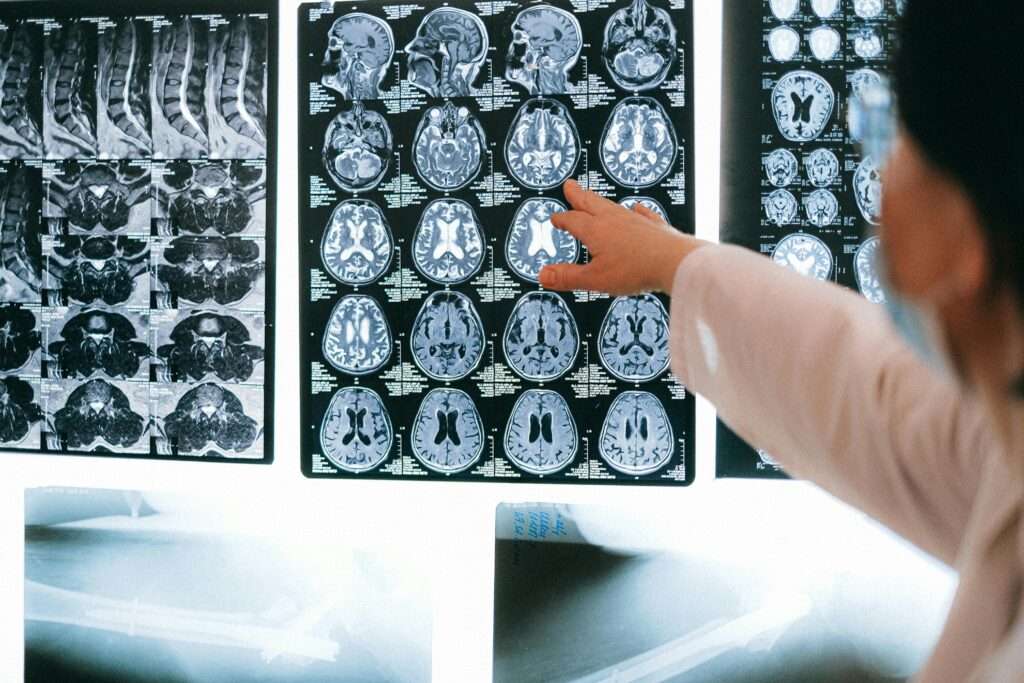Specialist seating can play a key part in managing many aspects of a ‘primary health need’, as defined by NHS Continuing Healthcare.
Jump straight to…
What is a ‘primary health need’?
A Primary Health Need is a specific term used by Continuing Healthcare teams to assess whether someone is eligible for NHS CHC funding.
This broad, generic-sounding term was developed by the Secretary of State in 2014, and is subject to specific interpretation in the context of CHC funding.
As the term is not defined in legislation, it is governed by the National Framework for NHS Continuing Healthcare and NHS-funded Nursing Care (revised 2018).
In a nutshell, a person is viewed as having a ‘primary health need’ if it can be said following completion of the Decision Support Tool (DST) that the main aspects of their care are focused on addressing and/or preventing health needs. A primary health need is about the level and type of their day-to-day care needs, rather than the cause or diagnosis.

How does the NHS assess if someone has ‘primary health need’?
Each individual case is assessed on its own merits in accordance with CHC funding criteria.
It is designed in this way to capture individual health needs above the limits of local authority social services funding.
As there is no clear-cut definition of what is classified as a ‘primary health need’, the NHS assessment looks at four key aspects of their care to decide if the person’s needs are beyond the scope of a local authority’s responsibilities.
These four areas are:
- Nature of the individual’s health needs
- Intensity
- Complexity
- Unpredictability
Nature
This section looks at the source of the person’s health needs – physical, mental or psychological – and the overall effect on their day-to-day care.
- The description of the person’s needs, adjectives used
- The impact on their overall health and wellbeing
- What types of interventions does the person require?
- Is particular knowledge, skill or training required in anticipating and addressing these needs?
- Is their condition improving or deteriorating?
- What would the consequences be if their needs were not met in a timely manner?
Intensity
This relates to the extent (intensity) and degree (severity) of their needs, and the level of support required to meet them.
- How severe are their needs?
- How often is care intervention required, and for how long?
- How many carers are required?
- Do their needs relate to more than one care domain? (Breathing, Nutrition, Continence, Skin, Mobility, Communication, Emotional Needs, Cognition, Behaviour, Drug Therapies, Altered States of Consciousness, Other Significant Care Needs)
Complexity
This looks at how the different needs present and interact with each other. Complex needs may result from a single condition, multiple conditions or the interaction of different conditions. How the individual responds to their condition may add additional aspects to their needs, for example mental health needs as a result of a physical condition.
- How hard is it to manage the condition and alleviate the various symptoms?
- Do the care needs interact with other?
- Do care needs impact other areas, making it harder to deliver care?
- What specific knowledge or skills do the carers need?
- Does the individual make it more difficult to provide care?
Unpredictability
Care needs can fluctuate because of the changing nature of the condition that underlies them. This can create further challenges of anticipating needs and providing for them in an effective and timely way.
- Are the individual’s carers and supporters able to anticipate when care needs will arise?
- Does the level of care required change frequently?
- Is the condition unstable by nature?
- What is the consequence of needs not being met when they arise unpredictably?
- What level of skill and knowledge do carers require to react to these unpredictable needs?
- How much monitoring does the person need?
The DST is an essential tool in helping care practitioners assess this practically, and provides consistency across the board. However, decisions should not be made on the DST alone, but as part of the total picture and the assessor’s professional judgement.

Lento Trio care chair
How to approach primary health need key characteristics
The approach taken by the multi-disciplinary team is critical in establishing whether there is a ‘primary health need’ or not. The guidance given by NHS Continuing Healthcare helps to inform the right approach to be taken under the National Framework.
The overall picture
Looking at the ‘totality’ of the person’s needs is a phrase often used in the NHS guidance. This involves looking at the whole picture and taking all aspects of a person’s care requirements into consideration, not just the obvious ones.
Having a primary care need is based on ‘the level and type of their overall actual day-to-day care needs taken in their totality’.
On its own merits
One of the reasons the definition surrounding ‘primary care need’ is deliberately vague is that every case is different, and some cases may not be captured adequately by the DST tool. This is why every case has to be considered on its own merits in reference to the National Framework provided.
No care gap
The guidance is designed to eliminate care needs that fall under existing local authority care, so as to provide a catch-all safety net for anyone who surpasses this level of need. As such, there should be no gap in provision where neither the NHS or the local authority fund care, it is either provided by one or the other.
Care by exception
The way the primary health need test is applied defines what ineligibility would look like, so people who pass the test are those who exceed these limits.
Ineligibility for NHS Continuing Healthcare would be where, taken as a whole, the nursing or other health services required by the individual:
- Are no more than incidental or ancillary to the provision of accommodation which local authority social services are, or would be but for a person’s means, under a duty to provide; and
- Are not of a nature beyond which a local authority whose primary responsibility it is to provide social service could be expected to provide.

How does specialist seating play in a role in primary health needs?
Seating directly supports a number of the key care domains included in the DST tool. Therefore, a requirement for specialist seating can strengthen a funding application, and help demonstrate where there is a primary care need.
Care domains that are impacted by specialist seating include:
Breathing
Respiratory problems can be alleviated by using the tilt in space and backrest recline function in specialist seating. By altering the recline position, this opens the chest cavity, helping to ease and regulate breathing difficulties.
Nutrition
Nutrition and hydration are key to overall health and wellbeing. The positioning options in specialist seating can help maintain an upright posture for eating meals, with the support of a tray where needed. Combined with supportive backrests and head support this can assist swallowing, reducing aspiration risk.
Continence
The fabrics and design of the Lento range make dealing with continence issues considerably easier, with waterproof and removeable magnetic cushions that prevent ingress and give smooth, recess-free surfaces to wipe clean.
Skin (tissue viability)
Tissue viability is one of the prime considerations with specialist seating. The technologies integrated into seating fabrics are designed to support excellent tissue viability, with their anti-shear and 4-way stretch properties. One of the main contact fabrics in our Lento range is dartex, a vapour-permeable fabric that keeps the skin cool and hydrated, as well as being soft and supple to prevent the build up of pressure.

Dartex fabric
Dartex also works brilliantly with pressure relieving gel or coolgel fabric, enhancing the pressure relieving qualities of these materials.
Mobility
Mobility can be improved with care chair users, even where this is severely limited, by compensating for limitations in movement. The sit-to-stand (or riser function) is common in rise recline chairs, and the angle of rise can be varied to suit the user. With electric action the user can recline themselves into a zero-gravity or sleeping position, and the braked castors and push bars on the Lento Mobile allow them to be moved easily from room to room.
Behaviour
Behavioural needs, particularly for those with cognitive impairment, can be improved with specialist seating by reducing discomfort and distress. This is a key feature of the Lento Neuro that cocoons the user in the chair, reducing sensory stimulation and having a calming effect.
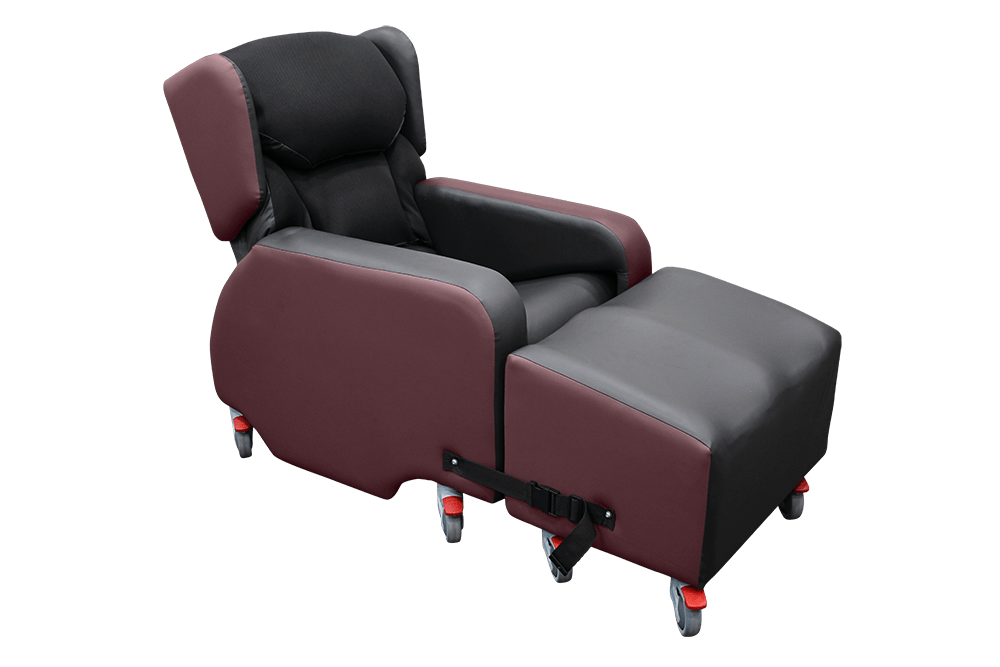
As shown from these care domains, specialist seating can mitigate many aspects of care involved with a primary health need.
Request a Seating Assessment
Frequently Asked Questions (FAQs)
What is a primary health need?
A primary health need refers to situations where a person’s main care requirements are focused on addressing health-related needs, rather than social care needs. It is the central test used by NHS Continuing Healthcare (CHC) to determine eligibility for full funding.
Is a primary health need the same as primary health care?
No. Primary health care generally refers to the first point of contact in the healthcare system (such as a GP). A primary health need is a specific legal and clinical concept used within CHC funding assessments to identify whether someone’s care needs are primarily health-related.
How does the NHS decide if someone has a primary health need?
The NHS assesses this using the Decision Support Tool (DST), which looks at the nature, intensity, complexity, and unpredictability of a person’s health needs. Each case is considered individually, based on the totality of needs.
What role does specialist seating play in managing primary health needs?
Specialist seating can directly impact multiple care domains assessed under CHC, such as breathing, nutrition, skin integrity, mobility, and behaviour. By addressing these areas, specialist seating can help manage a person’s primary health need.
Can specialist seating strengthen a CHC funding application?
Yes. Because specialist seating provides clinical benefits across key care domains, it can support evidence that a person’s needs are health-related rather than purely social. This can make a stronger case for CHC funding eligibility.



